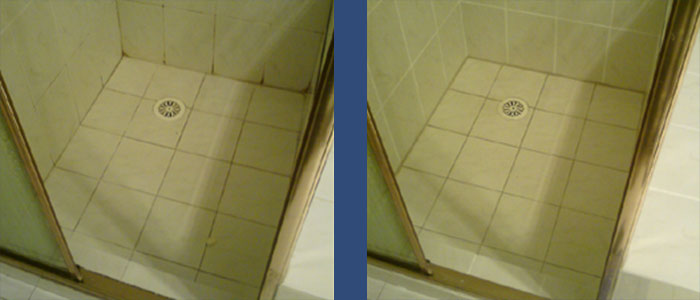Ways to Repair a Water-Damaged Wall in the Bathroom
Ways to Repair a Water-Damaged Wall in the Bathroom
Blog Article
Were you interested in ideas concerning How to Prevent Bathroom Water Damage?

The washroom is exceptionally prone for damp accumulation and potential water damages as a result of the regular use of water in it. This article uses basic assessment methods to help identifying water damages dangers.
The regular use of water in the bathroom makes it exceptionally prone for moist accumulation and also prospective water damage. By inspecting it regularly, you can minimize water associated problems.
The adhering to set of inspections is very easy to carry out and need to be done when in every three months in order to maintain your shower room in good shape and also to stop prospective water problems triggered by the bathtub, the shower, pipeline joints as well as plumbing, sinks, cabinets, and also the bathroom
Do not neglect executing these assessments and be detailed while doing them. Keep in mind that these straightforward evaluations can save you a great deal of money by supplying early signs for water damage
Bath tub as well as Shower
The shower and also tub require unique attention as well as upkeep. Check the floor tiles and replace if fractured. Ensure that there is no missing out on grout in between the tiles. Evaluate and change cracked caulking at joints where the wall surfaces meet the floor or the bath tub. Blocked drains pipes and pipelines problems will protect against the tub from drying out and might show major troubles beneath the tub. Consult with an expert quickly to prevent structural damages. Pay attention to stainings or soft locations around the bath tub walls as they might indicate an interior leakage.
Plumbing
Signs for water damage are tough to spot given that many pipelines are installed inside the walls.
Pay unique attention to floor covering and also walls dampness and spots as they might indicate an undetectable plumbing problem. Inspect dampness levels in adjoining areas as well.
Sinks as well as Cabinets
Sinks and also cabinets are subjected to dampness and humidity day-to-day and are typically ignored. Inspect frequently under the sink and on the counter top over it. Fix any kind of drip in the trap as it might recommend drainpipe problems. Browse the sink, sluggish draining pipelines might show a blocked drain. Replace sink seals if they are broken or loose.
The Bathroom
The commode is an at risk water joint. Examine the water lines and search for leaks around the toilet seat, in the hose pipe, and under the water storage tank. If you discover any type of indications of wetness on the floor around the bathroom, check for leaks in the toilet rim as well as storage tank seals.
Understand that hanging bathroom bowl deodorants increases the chances for clogs.
How to Prevent Water Damage in Your Bathroom?
Water damage repair is an expensive, meticulous, and lengthy process. Unfortunately, bathrooms are the most susceptible rooms to water damage due to toilets, showers, and sinks. Pipes and fixtures wear out over time and are not immune to damage. But all is not lost, as there are ways to prevent water damage from occurring in your bathroom.
Check Your Plumbing
Nothing lasts forever, especially pipes, which can rust and begin leaking over time. You should periodically conduct pipe inspections and pay attention for any musty smells or water stains that may indicate you need water damage repair. Here are some things to check:
Frequently test valves for your toilet, shower, and sink to ensure they are properly working. Check faucet supply lines hidden under vanities and replace when needed. Replace cracked or deteriorating caulking along sinks, tubs, and showers. If you notice a clog in your sink, call in a professional. Since you can’t check the pipes in the wall, keep an eye out for stains, drywall bubbling, musty smells, and excess moisture; if the bathroom is on a second level, check the ceiling of the room directly below for these signs. Don’t Overwork Your Toilet
One of the most common reasons bathrooms need water damage repair is due to overflowing toilets. Save yourself the hassle of cleanup by being mindful and not pushing your toilet to extreme limits. If you have young children, it is especially important to keep an eye on them when they are in the bathroom and to teach them how to avoid clogging the toilet. Here are some more tips to help prevent your toilet from overflowing:
If you have a septic tank, only use septic-safe toilet paper Do not flush anything down the toilet besides toilet paper; items like diapers and sanitary napkins will clog the piping Pay attention to your toilet’s water level: If it’s low, it could mean it is partially clogged or that there is a crack in the toilet bowl Maintain Your Shower/Tub
Replace showers or tubs with cracks or other damage; even hairline cracks can allow water to seep in and cause damage. Grout and caulk help prevent water from seeping into walls and floors, so repair them if they are chipped, cracked, or deteriorating. Replace torn shower curtains or shower doors with seals that no longer work. Dry the floor and drain water from the tub immediately after use to prevent damage from sitting water. https://www.alure.com/home-improvements-blog/resources/how-to-prevent-water-damage-in-your-bathroom

Hopefully you enjoyed reading our piece on How to Prevent Bathroom Water Damage. Thanks a lot for taking a few minutes to browse our piece of content. So long as you enjoyed reading our blog post kindly don't forget to pass it around. Thank you for your time. Visit us again soon.
Explore Report this page